The Advent of the eBook: Redefining the way we read and learn
The Introduction
The Oxford Dictionary of English defines the e-book as “an electronic version of a printed book; but e-books can and do exist without any printed equivalent. E-books are usually read on hardwaredevices known as e-Readers or e-book devices. Personal computers and some mobile phones can also be used to read e-books. The advent of the eBook has been creating a number of jitters and concerns in the education and print publishing sectors. The main reason for this is that uncertainty looms as it relates to the survival of traditional paperback books, and also if and how eBooks will transform the reading experiences of readers of all ages. As a result, a frantic drive is underway to fully explore this new reading technology and getting persons to buy into its features and innovativeness.
The Journey Begins
The first ebook was established in July 1971, as eText #1 of Project Gutenberg, a visionary project launched by Michael Hart to create electronic versions of literary works and disseminate them worldwide ( Lebert, 2009). As time passes on the project expands and new tasks taken on. The project got a major head-start with the invention of the web in 1990 and tapped it off with the creation of Distributed Proofreaders in 2000. This was done to digitize books from public domain. Project Gutenberg had a production rate of 340 new books for each month, 40 mirror sites worldwide and tens of thousands of books being downloaded everyday in 2008 ( Lebert, 2009). Even though publishers were very tentative to be the first to venture in the territory of the unknown, a new sense of boldness was later developed by the US National Academy Press in 1994. They were the first to post full text of some books for free after the authors have consented. They were eventually followed by the Massachusetts Institute of Technology in 1995. However, digital and traditional publishing became complementary as it was now obvious that both have their respective feel and audience. With the rate at which technology is advancing and more persons doing things the digital way, is it only a matter of time before paperback become extinct? Or will it stand the test of time and technology?
Digital Publishers: Taking the risk
With the passage of time and the enhanced trust in technology and its security, more publishers gained confidence and as a result went mainstream with their publishing. Digital publishing went mainstream in 1997 when traditional printing was disrupted for the first time by new photo composition machines. In addition, digital publishing accelerated the publication process and created a situation where designers, editors and all the other players involved could work on the same book. In essence, the publishing sector was now being revolutionized and paperback books were now facing a genuine competition. Universities and colleges were now getting on board and started printing books for various courses. This new idea was now getting a lot of attention as it proved to be much cheaper than the printed version; hence giving access to persons who weren’t financially stable to purchase printed texts. Experts also got involved to do their analysis about how digital text and paperbacks would coexist in the same space. Their outlook was centered on the demise of the latter at the expense of the former. That forecast is still underway as we wait with abated breath to see what the future holds for this head-to-head print showdown. Skeptics are of the view that as we refashion the book through digital technology, we are diminishing the sense of closure that belonged to the codex and to print ( Bolter, 2001). This statement has some merit and will find grounds with the traditional lovers of printed texts. However, if one should reason from the point of view of the digital natives, one would realize that we now exist in a digital environment where closure is secondary or non-existent. The introduction of hypertext has paved the way for continuity especially when wikis, blogs and other web applications and digital text are analyzed. I do endorse this continuity as I think that a discussion or a piece of writing is never yet complete as there is always something to be added. In essence, digital text has lifted the restrictions on print and have demonstrated that a book can be extended beyond its physical covers.
Why eBooks?
One should be cognizant that the eBook concept was not born out of the creators ingenuity; but can be seen as the refashioning of the printed text and imitation to a great extent. Simply put, the paperback is being used as the springboard for this venture and should not be factored out of the equation. According to Bolter (2001), eBook appropriates and refashion many of the physical properties as well as the interface of a traditional book. This remediation of print however has extended the reader’s reading experience; making a clear distinction between the two print rivals. Through this innovation, it offers what can be construed as a more immediate, complete or authentic reading experience as regular text is transformed into hypertext in which the reader can search for the occurrence of words and phrases throughout the text so that it becomes immediately available to the reader in a way printed book is not (Bolter, 2001). I am really fascinated by this immediateness and extension of the text. This doesn’t only present the reader with vicarious experiences but also present actual graphics to go with the imagination especially if the reader wants to explore the character beyond what is presented in the text. Coupled with that feel and feature, the eBook is not about a single text, but rather a library of texts in the palm of your hand. Even though this might be hard to assimilate when one considers that it is a burden to walk around with more than four major text books, eBook has transcends that boundary. The eBook is designed to be reloaded and therefore it is connected to a growing world of materials online which takes the reader into the information hub; cyberspace, which prevents it from being a stand-alone device, but a portal ( Bolter, 2001).
Ebooks clearly have many features over its paperback counterpart and with the continued advancement in technology, the margin continues to widen considerably. Users are privy to control the look and feel of the eBook by changing the text, writing and saving notes, highlighting text, bookmarking pages, interactive dictionaries, navigation system to remember where the reader last stopped and adding drawings. Therefore, eBook and its amazing features doesn’t only help the reader to have a better reading experience but also help with their physical wellbeing. On a regular basis, I see kindergarten and primary grades students struggling with bags of massive backpacks. I have even seen cases where these heavy packs have transformed their body formation and the manner in which they walk. Recent studies have shown that the average middle schooler’s backpack weighs over 20 pounds (Petracco, 2001), and many students with physical impairments are unable to carry that amount around. Therefore, the ability to carry books, references, notes and other resources electronically allows users to make better use of the information, along with the additional just-in-time learning advantages of options like the interactive dictionaries ( Cavanaugh, 2001).
Ebook and reading enhancement in the gifted and struggling reader
The gifted learner and reader
Despite the excitement and intrigue surrounding the eBook concept, my main interest lies within its capabilities to enhance reading in both struggling and gifted readers. I am a teacher of reading and for years have been working with paperbacks in my reading program. Even though I have been seeing positive results in my school district, the national results are not that convincing. This led me to consider if a more innovative version of the reading materials used across the island would make a difference. Gifted readers often read earlier than the typical student and tend to read independently soon after teacher instruction. They also tend to be better readers, requiring less drill for mastery of skills (Halsted, 1990). It is very interesting that the gifted reader is not considered many classrooms as in many situations attention is only given to the struggling readers. Often times they are left on their own instead of a structured framework to guide and develop their reading potential. However, there is no doubt that gifted students can benefit from the wide array of tools afforded by eBook. Clark (1983) identifies cognitive needs that differentiate gifted children from others. Through eBook, these can be met if the correct procedures are followed. According to Weber, etal ( 2006), access to a wide variety of eBooks encourages exposure to new and challenging information, varied subjects, areas of interest, and difficult vocabulary and concepts. Ebook definitely provides such a platform where this reader can independently explore the varied content to locate materials that will challenge his/her abilities. The regular classroom library sometimes doesn’t cater to these students needs and as a result, they find themselves delving in materials that are below their level. This may lead to frustration and boredom and also a lack of interest in classroom activities. Gifted readers may be in jeopardy of losing sight of their schools as the place to find challenging books because they don’t find and interact with appropriate materials (Brown & Rogan, 1983). As a result, these electronic forms of books and libraries are expanding opportunities for students to have access to books. Using these resources, a reader can often find related titles, such as other books in a series or by the same author, which may not be available at either the school orlocal public library (Weber, etal, 2006). This resonates with me and the situation in my country. As it relates to resources in my country, shortage is a major problem and as a result we have to be reusing the limited books and materials we have. In doing so, we are not able to extend our students beyond the physical libraries. With the integration of eBooks in our program, students will no longer be deprived of information but would rather be given the opportunities to follow up on projects and even conduct their personal research.
In addition, eBooks also cater to the gifted students who are underachieving. This is usually a critical issue in the classrooms as on some occasions, teachers and institutions are clueless as it relates to facilitating the gifted students. This usually led to these learners being suppressed and frustrated as their needs and abilities are not catered to. It is estimated that between 20–50% of gifted students underachieve (Ford & Thomas, n.d.). Ebooks can be helpful to these students for a number of reasons, which include motivating approaches. West-Christy (2003) suggests five useful scaffolding techniques that eBooks provide for readers who might be reluctant or remedial. These five techniques are:
• offer a wide range of reading materials,
• use prereading techniques,
• incorporate large print materials,
• engage multiple modalities, and
• teach important vocabulary.
These supporting techniques are integrated into most eBook programs and therefore can provide additional books for students to increase the range of the reading materials. With features to increase font size, read-aloud feature with synchronizing highlighting to engage reading in multiple modalities and interactive diction, eBooks can motivate underachievers to read more and broaden their respective vocabularies.
The struggling learner and reader
Even though it is always important to cater to all learners, there is no doubt that the struggling readers are always the greatest concern of all reading programs. The aim is always to get these readers to a level where they can gain mastery and be competent at grade level or above. The global literacy rate is not where we would like it to be and stakeholders are very concerned in my country, Jamaica. Several studies are now currently underway to come up with solutions to fix this problem. To combat this problem, eBook developers have added features to their devices that will improve the reading levels of struggling readers. Taking the lead role in this drive is Amazon’s Kindle eBook developers. First, the large selection of books on Amazon has been a major factor in motivating struggling students to read. They are no longer confined to to solely choose from the physical library but now have 690, 355 ebooks as of September 3, 2010 from which to choose. This easy access to books is essential in moving students past the basics (Krashen, 2006). Struggling readers usually shy away from reading because their interests are not considered in the classrooms and they sometimes given materials that are of interest to the teachers instead. According to Schoenbach; et al. (1999), recognizing what one likes to read is the first step toward becoming an experienced and, eventually, a lifelong reader. To foster students’ interest, the Amazon Kindle organizes eBooks into 24 categories and subcategories. For example if a student is interested in basketball he would choose the sport category after which he or she will choose from the subcategory of college, general or professional. Coupled with the other aforementioned features, it has been seen that struggling readers are benefiting tremendously from exposure to eBooks. Majority of students who use the text to speech feature claim that it helps them understand what they are reading better because they can hear the text while seeing it. In addition, they claim that the text to speech feature and built-in dictionary aid with their vocabulary development (Engel-Unruh, 2010). With these great testimonies and more innovations in the pipeline, the future of global literacy is looking rather promising. After struggling with an age-old reading problem for many decades, is eBook shaping up to be the revolutionary agent or game-changer in global literacy?
References
Bolter. J.D. (2001). Writing Spaces. Computers, Hypertext, and the Remediation of Print. Routledge:
New York.
Brown, W., & Rogan, J. (1983). Reading and young gifted children. Roeper Review, 5, 6–9.
Cavanaugh, T. (2002). Ebooks and Accommodation: Is this the Future of Print Accommodation?
Journal of Teaching Exceptional Children. 35(2) pp.56-61.
Clark, B. (1983). Growing up gifted. Columbus, OH: Merrill.
Engel-Unruh, M. (2010). Tchnology Connection: ReKindling an Interest in Reading with At-Risk
Students. Pennsylvania: Library Media Connection.
Ford, D. Y., & Thomas, A. (n.d.). Underachievement among gifted minority students: Problems and promises. Retrieved July 10, 2005, from http://library.adoption.com/Childhood-Learning-and-Education/Underachievement-Among-Gifted-Minority-Students-Problems and-Promises/article/927/1.html
Halsted, J. W. (1990). Guiding the gifted reader. (ERIC Document Reproduction Service No. E481).
Retrieved June 15, 2005, from http://www.eric.ed.gov
Krashen, S. (2006). Free Reading. School Library Journal. Retrieved May 28, 2010 from
www.schoollibraryjournal.com.
Lebert, M. (2009). A Short History of eBooks. Toronto: NEF, University of Toronto.
Petracco, P. (2001). Weighing in on Backpacks. School Leader Info Link. Retrieved November 17,
2011 from http://www.njsba.org/members_only/publications/school_leader/May-June-
2001/info_link.htm.
Schoenbach, R. et al (1999). Reading for Understanding: A Guide to Improving Reading in Middle and
High School Classrooms. San Francisco: Jossey-Bass.
Weber, C., Cavanaugh, T. (2006). Using eBooks With Gifted and Advanced Readers. Journal of Gifted
Child Today. 29(4) pp. 56-63.
West-Christy, J. (2003). Helping remedial and reluctant readers. Retrieved October 18, 2004, from
http://www.glencoe.com/sec/teachingtoday/educationupclose.phtml/29
Whitmore, J. (1980). Giftedness, conflict, and underachievement. Boston: Allyn & Bacon.

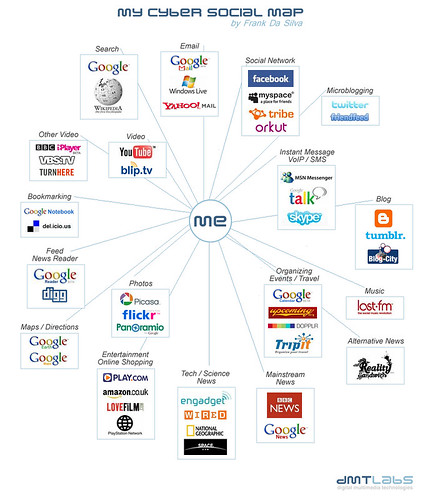
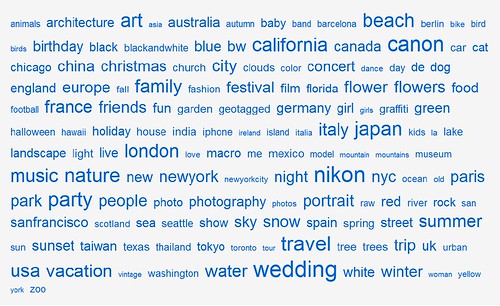

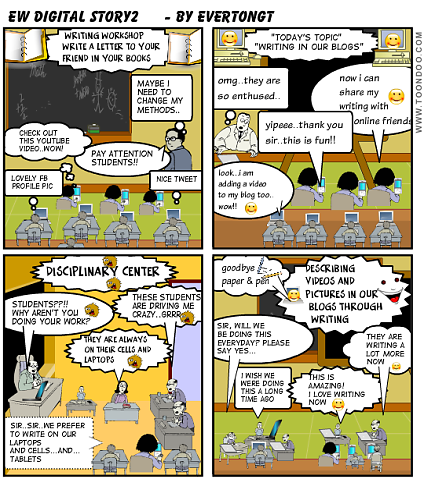



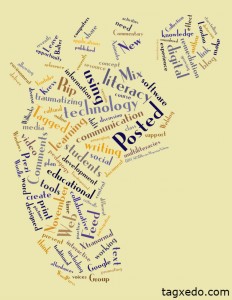
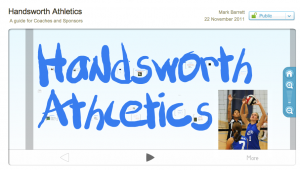
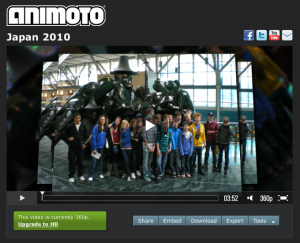
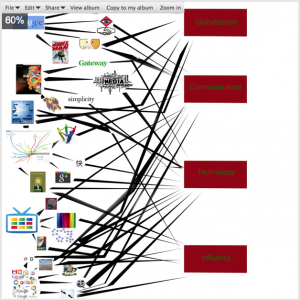





Learning Theories and the Pedagogy of Multiliteracies
Introduction
In its 1996 Manifesto, the New London Group examined the radical changes in the personal, public and working lives of people which were being propelled by globalization, technological evolutions, and increasing cultural and social diversity. They laid out pedagogical recommendations which they believed would be conducive in preparing the students for these transformations. The New London Group recommended the need to allow for and to celebrate the diversity in the society instead of the earlier attempts in education to assimilate. They stated that, “The role of pedagogy is to develop an epistemology of pluralism that provides access without people having to erase or leave behind different subjectivities. This has to be the basis of a new norm.”
Their Recommendations
The New London Group postulated that this could be achieved by creating learning environments with the use of designs and multimodalities and by applying these designs and modalities to teach. Existing designs could be used, redesigned and then newer ones could be created in the learning process. They suggested a shift from absolute reliance on text to inclusion of other designs and symbols to create linguistic, visual, audio, gestural, spatial, and multimodal meanings. Text was not only to be limited to paper but could be electronic, live, or multimedia. This way the New London Group acknowledged the crucial role of technology in education. The New London Group recommended that such learning designs should be applied in a socio-culturally relevant context (Situated practice) but with the guidance of the teacher to help analyse concepts through a dialogue (Overt instructions). The students would need to review, reflect, self-assess, and internalize their learning (Critical framing) before applying their learning to a new context (Transformed practice). They termed these recommendations the Pedagogy of Multiliteracies.
Realization of existing learning theories
While the members of the New London Group drew from their own theories and beliefs about pedagogy to come up with this landmark proposal, there are many preexisting pedagogical views that also found credibility and realization in their recommendations. In examining the pedagogy of multiliteracies, I saw application of views that were embedded in Vygotsky Social Development Theory, Bandura’s Social Cognitive Theory, Activity Theory, Situation Cognition, Distributed Learning, Constructivism, and Gardner’s Theory of Multiple Intelligence. All these theories are grounded in pluralism. The tenets of these theories get amplified and work in coordination in the world of multiliteracies.
Vygotsky has been mentioned by the New London Group in their manifesto. Vyotsky’s Social Development Theory emphasizes that the learner learns relevant contexts through social interactions and collaborations. Vygotsky’s Zone of Proximal Development accentuates the need of guidance for the learner by a more knowledgeable individual to help understand and analyze concepts. Both of Vygotsky’s key ideas make the base of the pedagogical recommendations of situated practice and overt instructions made by the New London Group in applying Multiliteracies. Bandura’s Social Cognitive Theory also posits that people learn from one another in society through reciprocal determinism, where the society and the individual continue to impact each other. Learning is controlled by the individual and the environment. Nowhere is this more applicable now than in our interactive technological world and in the use of different modalities to interact with the environment, which the New London Group advances as essential tools for learning.
Activity theory, which finds its origin in Vygotsky’s beliefs, states that the artefacts or tools that exist in the community help learners build and experience knowledge. Such tools are effective with collaboration and social learning. These tools are a part of the design, and the multimodal representation recommended in Multiliteracies. The use of Web tools in a collaborative social environment demonstrates activity theory in practice.
Situated Cognition theorists suggest that learning is not about storage and retrieval but rather about the situation. Such views make knowledge inseparable from context, activity, people, culture, and language. They stress on the need to create knowledge within the Community of Practice. The New London Group also recognizes knowledge as being related to people, culture, and languages as a result of globalization and technological progress.
Hutchins(1995), who came up with the distributed cognition theory believes that “the mind is in the world (as opposed to the world being in the mind).” We learn from our environment through the tools and individuals using different media. Again, this theory embeds learning within a social milieu and emphasizes collective creation of knowledge.
The New London Group’s pedagogical plan of situated practice, overt instructions, critical framing, and transformed practice resonate with Driver and Oldham (1986) model for planning constructivist instructions. Their model had 5 elements of Orientation, Elicitation, Restructuring of Ideas, Application of Ideas and Review which synchronize well with the recommendation of the New London Group. The learning theory of constructivism promulgates all the views supported by Multiliteracies about relevancy of content, role of facilitators, social interaction and metacognition, and the need to apply learning to a new environment through activities like inquiry based, product based, project based, problem based or case based activities.
But above all I think by acknowledging that learning environments be designed to create linguistic, visual, audio, gestural, spatial, and multimodal meanings, the Multiliteracies pedagogy has recognized and adopted Gardner’s Learning Theory which states that intelligence is multimodal.
Conclusion
The commonalities in the above mentioned theories clearly show that there was an existing awareness amongst the academics about the need to re-evaluate the existing views about education and attempts were being made to do so . The Pedagogy of Multiliteracies by the New London Group is but a very comprehensive culmination of the key concepts of these philosophies that had been evolving over the last few decades in the face of changing social, economic needs of the world.
Reference
New London Group. (1996). A pedagogy of multiliteracies: Designing social futures. Harvard Educational Review, 66(1), 60-92.